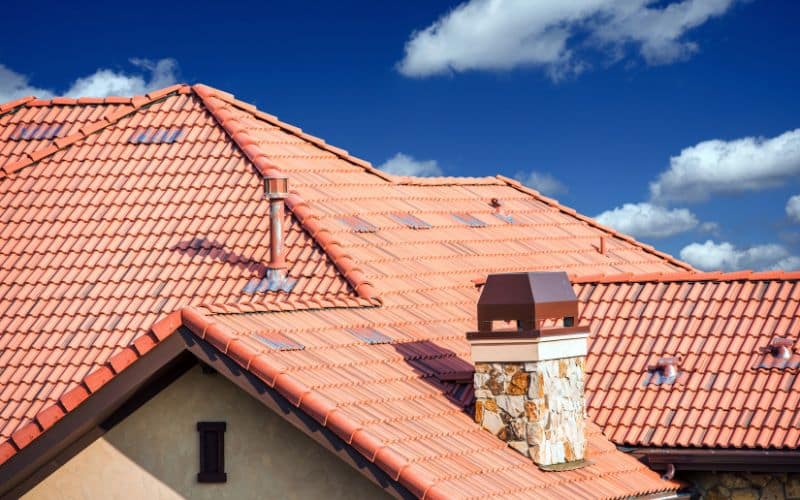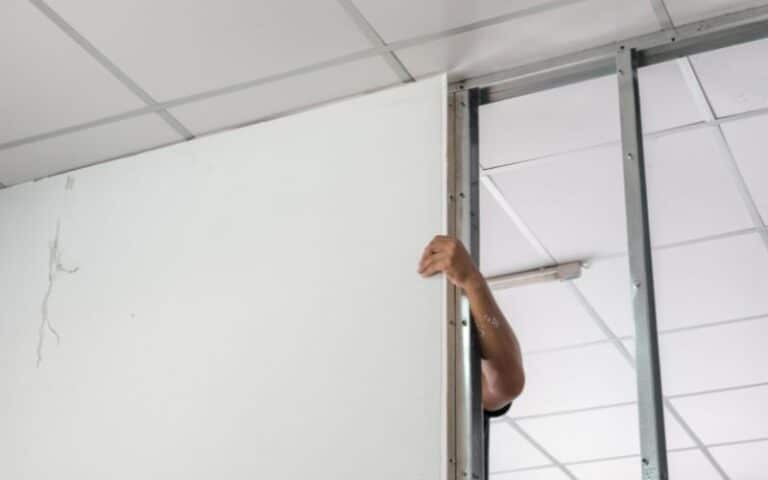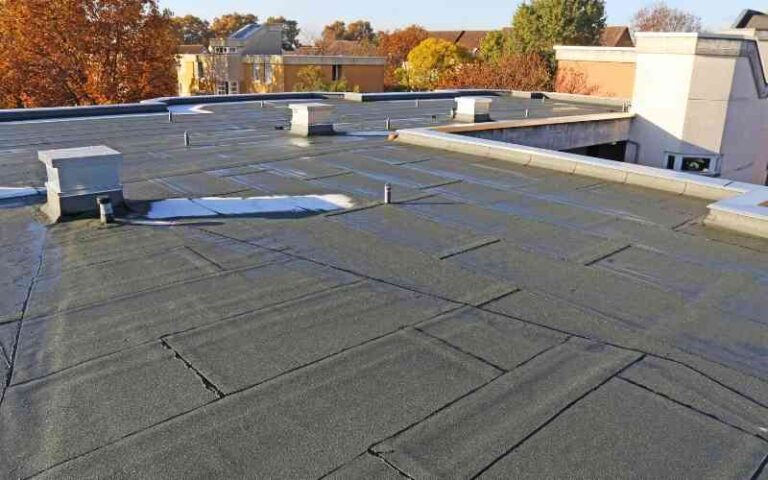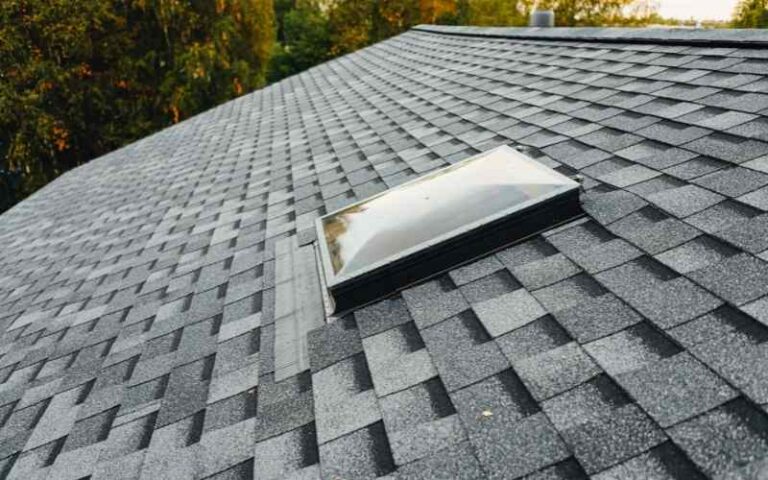Roof sheathing is one of the most common and significant parts of a building. This article will tell you how to install the best roof sheaths.
When you want to install a roof sheathing, you must fix it perpendicular to its support. Selecting it this way will make your roof sheath much stronger than fixing it vertically.
Ready for a Roofing Quiz?
Should Sheathing be Horizontal Or Vertical?

Although you install wall sheaths horizontally, some manufacturers have come up with contrived longer wall sheath panels.
No matter how you install your sheathing, support the panel edges—all panel edges with a 2-inch gap between their frame.
For the shear wall to meet the structured weights, the wall must have an adequate edge nailing the way the engineer designed it.
The strength axis can be vertical or horizontal to the support if you install a wall sheath.
Here are some of the advantages of the improved vertical panel installment.
#1. Air leakage reduction
The taller wall panel of 9 to 10 inches installed vertically will decrease air leakage by 60%. Reduced air will lessen your energy consumption, enabling your space heater to last long.
#2. Economizes time and money
When you use a taller wall sheath, it will withstand heavy winds. This action will eradicate the metal hardware such as wind leashes. This more extended sheath is a perfect length for building anywhere.
Also, you can use the taller panel to remove the siege material at the horizontal junctions and create endless weight routes having all the joints on the framing units.
Blocking all these materials will save your money and reduce junk and errors.
The opened wall compartment makes insulation quicker, simpler, and more satisfactory. In addition, taller heel trusses come with extended panels that give more insulation services.
OSB Roof Sheathing Vertical or Horizontal
It’s best to install an Oriented strand board (OSB) roof sheath horizontally, and there is no regulation to installing the roof sheath OSB is stronger on the long axis.
An oriented strand board is available in different sizes.
OSB manufacturers treat the sheath with a fungicide to make it resistant to decay and seal the sheath horizons to decrease entry into the water.
When installing the OSB on the roof, leave a gap of ⅛- inch between the panels.
Oriented strand board has a rough and smooth side. The polished side always has the tag “This side down,” while the tough side allows friction for the laborers stepping on the roof during placement.
You have to exercise caution along the roof hip, so you will not position the strength axis and the support parallel to each other and cause the panel to surpass the ultimate thickness range.
When installing the sheathing horizontally, the grade stamps should face into the attic, and the screen surface facing up.
#1. Benefits of an Oriented Strand Board
- It is cheaper to buy
- OSB is easier to produce since it requires smaller trees.
- It is available in larger sizes.
- You can modify the panels to fit different weather conditions.
- It has a better shear power.
#2. Disadvantages of OSB
- OSB does not absorb moisture and will show signs of defect when it dries.
- You cannot use it on the ground.
Can I Put Roof Sheathing Vertically Or Horizontally?
It is better to install your roof sheath the way the engineer advised; install it manually if you have experience on roofs, or you can allow professionals to do the job.
Anyhow you install it, ensure it’s strong enough for your building and climate. There are different types of roof sheathing you can use on your roof; they are:
#1. Concrete Sheath
You can use this sheath type when the roof needs a strong grade of the sheath and as a fireproofing material. Concrete is the material an architect uses when building an eco-friendly greenhouse.
It is simple to clean and lessens the probability of wind damaging the roof, making it cheap.
#2. Oriented Strand Board decks (OSB)
OSB is a popular sheath that is cheap and more durable. OSB producers generated this synthetic material from wood pieces with a specialized adhesive gripping them together.
The combination of the wood sheath and recent technology makes the sheath strong and sturdy.
#3. Plywood
Plywood is another well-known roof sheathing material made from sheets with various entangled woods; different sheets make the roof sheath thicker and lower, shrinking and bulging for a long time.
Plywood is a dense material that hinders water from entering your roof and damaging your house; the difference between plywood and OSB is that plywood does not absorb moisture and doesn’t decay.
Therefore, plywood and OSB are the best material for your roof sheath installation.
What is Better For a Roof Sheathing Vertical or Horizontal?
It is best to install the roof sheath horizontally because it makes it strong. When installing your roof sheathing, follow the steps below:
#1. First, ensure the Nailing Surface Levels
You can check the nail surface level using straight wood (it should be 6 feet to 10 feet long) and join the trusses to get a leveled nailing surface.
Then, when you have a bent truss chord, straighten it with a block.
#2. Your Roof Ventilation Must be In Line With the Building Code
For every 1000 square feet, you must leave at least an area of 960 square inches for the net available ventilation in the ceiling region.
Instead, use vent chimneys that run through the roof compartment to dispense exhaust air from kitchens, bathrooms, and laundry outside.
Make sure you don’t discharge the air to the roof compartment directly.
Instead, install baffles with 1-inch of space between the frame and under ceiling decking to ensure the roof’s insulation doesn’t obstruct ventilation.
#3. Tighten the Panels
Tighten the panels by at least 0.13- inches by 2-½-inches. Space the nails with about 6-inch in the middle at the edges of the panel support.
When the license is in the middle, clasp the panel in the center by 12-inches.
If you live in a windy neighborhood, you should tighten the panels more. For more information, check the building codes and standards.
#4. Cover the Roof Sheath with Shingle Underlayment Felt
Cover the sheath with a single underlayment felt unless the producer gives you another instruction on how to cover the sheath to reduce weather vulnerability.
Check the roofing manufacturer’s advice to know more information.
Horizontal vs. Vertical sheathing
When the load is parallel to the wall, you can install your sheath horizontally or vertically. The way you install the sheath will not affect the performance. But that is not the case in the roof sheathing.
The structural sheathing panel has a power axis parallel to the panel’s length unless it is in another position.
For example, on ceilings, the sheath is perpendicular to supports on tops because this position makes the roof or floor very strong.
Also, the wind load vertically to the wall is the same as the load on the floor and roof; therefore, installing the sheathing will allow the wall to withstand wind pressure.
Installing the sheath in the horizontal position can resist wind of higher speed than the vertical installation.
When you install the roof sheath horizontally in areas such as the suburbs, there is a barrier that boosts the wind.
For example, a panel that is ⅜-inch thick with a span grade of 24/0 can deal with the three-second wind up to 195 mph.
But when you install the same panel vertically, it can only handle a breeze up to 110 mph.
Conclusion
Whether you want to install a new roof sheath or want to replace your old roof sheaths, make sure you install it the right way and use the best roof sheaths.
This action will save you money and at the same time provide you with a comfortable roof for your house.






